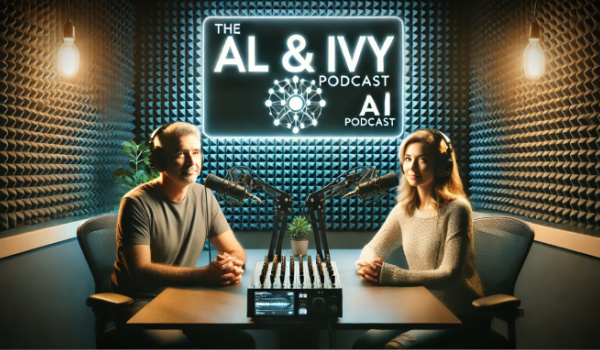Today, most businesses want to leverage automation—some to serve more clients with a better experience and some to eliminate frustrating delays and hang-ups within their own processes.
But occasionally, wealth management firms also want to take a deeper dive into automation by adopting a transformational approach, says Sudhish Sasidharan, Solutions Consultant with JIFFY.ai, a low-code, artificial-intelligence-infused apps-based automation platform. In order to ensure an ongoing and expansive shift towards automated processes, these firms mostly set up their own automation centers of excellence (CoE). “A center of excellence is a core team focusing on the transformation initiative at the firm. Firms set it up to maximize the return on investment with the automation framework,” he says.
Three core elements need to be in place for a CoE approach to become successful: Automation has to be a high priority of the firm; the firm should be able to adapt automation quickly; and automation must be implemented with a people-centric agenda.
Among these, the most important element is prioritization.
“There has to be a deep, multi-year C-suite agenda with definite outcomes and focusing on the areas they are planning to automate to achieve those ends,” Sasidharan says. “It has to be aligned with their thinking, there has to be a budget, and they have to invest to transform the way the organization operates.”
It is equally important to be able to scale automation quickly out to the people who need it the most within the organization, and also to formulate the right policies to create standard, repeatable processes wherein these automations can be put to the best use.
Ideally, the firms also must prioritize a complementary partnership between people and technology, so that they can retain their valuable talent pool even while creating value for customers and stakeholders.
“The JIFFY.ai team specializes in ensuring that the automation CoE stitches all competencies together, builds the best strategy, and creates the right infrastructure for managing these initiatives,” Sasidharan says. “The team effectively operationalizes end-to-end automation initiatives in the organization.”
This hands-on engagement model liberates the leadership of the client firm so they can focus more on realizing ROI goals.
Case In Point
“The complexity of the organization makes it even more important for them to have a CoE that can help all stakeholders navigate easily through its structure,” says Sasidharan. “As their enterprise automation partners, the CoE enables JIFFY.ai to understand their business—or businesses—in a way that is integrated to be able to implement and scale automation most successfully.”
In most industries, the prime objective of Centers of Excellence (CoE) is to formulate business transformation strategies that align with the organization’s strategy, and thereby maximize value for customers and stakeholders.
As the influence of the CoE spans across the transformation lifecycle, it is founded on four pillars: Strategy, Engagement, Governance and Execution. This holds true for an Automation Center of Excellence as well.
Strategy involves creating the right processes, collecting data and running the ROI process to determine which processes can be automated, and to review whether an automation is successful, says Sudhish Sasidharan, Solutions Consultant with JIFFY.ai, a low-code, artificial-intelligence-infused apps-based automation platform.
“The second pillar is an engagement model, which includes clear roles and responsibilities, creating channels for effective communication, and thinking about ways to measure problems and benefits and to report what is really happening,” says Sasidharan. “The third pillar, governance, is making sure we have the right framework in place in terms of scalability.”
Once the strategy and plan are in place, the fourth pillar, execution, oversees how initiatives can be ordered and changes can be implemented on an ongoing basis.
Firms need to make sure they have the right people in place for the building and running the CoE. Within each pillar, teams of program managers, business analysts, and solution architects should be involved.
“People who are part of these pillars get assigned to different goals,” Sasidharan says. “You need to have individuals at the core, who are part of planning, you must have an executive sponsor, and also need a business owner who wants to benefit from this transformation. You should also have the center-of-influence head, who keeps the channels open between the owners and sponsors. He should make sure that the individuals and people in each pillar are well supported and coordinated.”
The core CoE team is responsible for execution, for making sure the work is done in accordance with the policy and strategy.
How the Center of Excellence Works
The Automation CoE sets objectives and then narrows them down to focus areas that should be addressed on priority, because these could often be obvious pain points within the company’s processes.
“In a large financial services organization, there are various businesses that present opportunities for automation technology—the CoE helps the organization to realize their true value,” says Sasidharan. “These business units might have hundreds or thousands of processes, which can be accelerated and made more efficient with automation.”
The Automation CoE takes a closer look at these processes in terms of steps and manpower, considering different levers that can be used for value realization. It also considers whether some steps can be put aside or some processes can be eliminated entirely.
It’s not just a matter of deciding whether an individual’s work can be taken over by a machine, says Sasidharan, it is also examining whether the user experience can be improved and made more efficient with automation. JIFFY.ai has deep experience in setting up highly efficient Intelligent Automation CoEs for global leaders across multiple industries.
“As a preferred intelligent automation partner for our clients, we work closely with their teams to identify a few such processes and then create a roadmap,” he says. “We might start with 10 processes for which we can realize value and business benefits over the next year, and then we get the sign-off from the client’s leadership. We show them what the transformed process is going to look like, and move towards planning and creating a project.”
The Importance of Staying on Track
Perhaps the most significant values a CoE brings to the organization are purpose and consistency.
“Most organizations tend to get discouraged in the initial stages of their automation journey because the value realization isn’t perceptible immediately,” Sasidharan says. “Others might see an early success and try to scale their solution across their organization. This approach could fail because things don’t work the same way everywhere, or because it isn’t done fast enough.”
That’s precisely why a Center of Excellence can be the key to effectively implementing automation for very complex firms. It helps to institutionalize an intelligent automation framework, which will maximize the ROI.
“The CoE helps to establish an intelligent automation practice and then scale it,” Sasidharan says. “It establishes quality controls and standards associated with a product, process or multiple products or processes within multiple initiatives. It stands as a centralized function that helps the organization to transform in a much more coherent way.”







